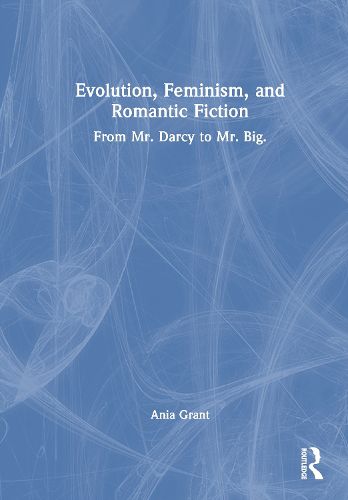Readings Newsletter
Become a Readings Member to make your shopping experience even easier.
Sign in or sign up for free!
You’re not far away from qualifying for FREE standard shipping within Australia
You’ve qualified for FREE standard shipping within Australia
The cart is loading…






Romantic fiction has long been dismissed as trivial and denounced for peddling supposedly patriarchal myths of heterosexual love and marriage. Despite such criticism, the popularity of romantic fiction has only increased in recent decades.
Drawing on research from the evolutionary sciences, Ania Grant proposes that narrative patterns of romantic stories and their enduring appeal reflect the importance of love as a fundamental human drive. She examines two of the most successful and critically scrutinized romantic narratives of the past 200 years, Jane Austen's classic novel Pride and Prejudice and the hit television series Sex and the City, and argues that such texts simulate the cognitive and emotional complexities of mate choice-one of the most consequential decisions from both a biological and a cultural perspective. Her biocultural analysis aligns the interpretation of romantic fiction with the feminist ideals of female autonomy and gender cooperation. It also suggests that positive identification with romantic heroines gives audiences the hope and energy to pursue the transformation of gender relations in real life.
The book will be of interest to anyone who ever wondered why so many women (and some men) around the world are enthralled by romantic stories, as well as to anyone who has ever been inspired by romantic happy endings to strive for a world in which men and women love and cooperate with each other-even if it seems like a utopian ideal while the war of the sexes rages on.
$9.00 standard shipping within Australia
FREE standard shipping within Australia for orders over $100.00
Express & International shipping calculated at checkout
Romantic fiction has long been dismissed as trivial and denounced for peddling supposedly patriarchal myths of heterosexual love and marriage. Despite such criticism, the popularity of romantic fiction has only increased in recent decades.
Drawing on research from the evolutionary sciences, Ania Grant proposes that narrative patterns of romantic stories and their enduring appeal reflect the importance of love as a fundamental human drive. She examines two of the most successful and critically scrutinized romantic narratives of the past 200 years, Jane Austen's classic novel Pride and Prejudice and the hit television series Sex and the City, and argues that such texts simulate the cognitive and emotional complexities of mate choice-one of the most consequential decisions from both a biological and a cultural perspective. Her biocultural analysis aligns the interpretation of romantic fiction with the feminist ideals of female autonomy and gender cooperation. It also suggests that positive identification with romantic heroines gives audiences the hope and energy to pursue the transformation of gender relations in real life.
The book will be of interest to anyone who ever wondered why so many women (and some men) around the world are enthralled by romantic stories, as well as to anyone who has ever been inspired by romantic happy endings to strive for a world in which men and women love and cooperate with each other-even if it seems like a utopian ideal while the war of the sexes rages on.